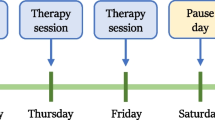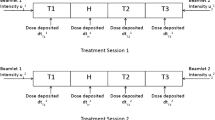Abstract.
Approximately 40% of all U.S. cancer cases are treated with radiation therapy. In Intensity-Modulated Radiation Therapy (IMRT) the treatment planning problem is to choose external beam angles and their corresponding intensity maps (showing how the intensity varies across a given beam) to maximize tumor dose subject to the tolerances of surrounding healthy tissues. Dose, like temperature, is a quantity defined at each point in the body, and the distribution of dose is determined by the choice of treatment parameters available to the planner. In addition to absolute dose limits in healthy tissues, some tissues have at least one dose-volume restriction that requires a fraction of its volume to not exceed a specified tighter threshold level for damage. There may also be a homogeneity limit for the tumor that restricts the allowed spread of dose across its volume. We formulate this planning problem as a mixed integer program over a coupled pair of column generation processes -- one designed to produce intensity maps, and a second specifying protected area choices for tissues under dose-volume restrictions. The combined procedure is shown to strike a balance between computing an approximately optimal solution and bounding its maximum possible suboptimality that we believe holds promise for implementations able to offer the power and flexibility of mixed-integer linear programming models on instances of practical scale.
Similar content being viewed by others
References
Bednarz, G., Michalski, D., Houser, C., Xiao, Y., Huq, M.S., Xiao, Y., Anne, P.R., Galvin, J.M.: The use of mixed-integer programming for inverse treatment planning with pre-defined field segments. Phys. Med. Biol. 47, 2235–2245 (2002)
Bixby, R.E., Fenelon, M., Gu, Z., Rothberg, E., Wunderling, R.: MIP: Theory and practice – closing the gap. In: Powell, M. J.D., Scholtes, S. (eds.), System Modeling and Optimization: Methods, Theory, and Applications, Kluwer Academic Publishers, 2000, pp. 19–49
Bortfeld, T., Boyer, A., Schlegel, W., Kahler, D., Waldron, T.: Realization and verification of three-dimensional conformal radiotherapy with modulated fields. Int. J. Radiat. Oncol. Biol. Phys. 30, 899–908 (1994)
Buckles, B.P., Petry, F.E.: Genetic Algorithms. IEEE Computer Society, Los Alamitos, CA, 1992, pp. 1–4
Chappell, R., Fowler, J.F.: Steepness of the dose-response curve for larynx cancer (letter). Radiother. Oncol. 30, (1994)
Cho, P.S., Lee, S., Marks II, R.J., Oh, S., Sutlief, S.G., Phillips, M.H.: Optimization of intensity modulated beams with volume constraints using two methods: Cost function minimization and projections onto convex sets. Med. Phys. 25, 435–443 (1998)
Cormack, A.M.: A problem in rotation therapy with x-rays. Int. J. Radiat. Oncol. Biol. Phys. 13, 623–630 (1987)
de Wagter, C., Colle, C.O., Fortan, L.G., van Duyse, B.B., van den Berge, D.L., de Neve, W.J.: 3D conformal intensity-modulated radiotherapy planning: interactive optimization by constrained matrix inversion. Radiother Oncol. 47, 69–76 (1998)
Ezzell, G.A.: Genetic and geometric optimization of three-dimensional radiation therapy treatment planning. Med. Phys. 23, 293–305 (1996)
Greenlee, R.T., Hill-Harmon, M.B., Murray, T., Thun, M.: Cancer Statistics, 2001. CA Cancer J. Clin. 51, 15–36 (2001)
Hamacher, H.W., Kufer, K.H.: Inverse radiation therapy planning–a multicriteria optimization problem. Disc. Appl. Math. 118, 145–161 (2002)
Hamacher, H.W., Lenzen, F.: A mixed-integer programming approach to the multileaf collimator problem. In: Schlegel, W. and Bortfeld, T. (eds.), The Use of Computers in Radiation Therapy, Springer, 2000, pp. 210–212
Holland, J.H.: Adaption in Natural and Artificial Systems. University of Michigan, Ann Arbor, 1975
Holmes, T., Mackie, T.R.: A comparison of three inverse treatment planning algorithms. Phys. Med. Biol., 91–106 (1994)
Hristov, D.H., Fallone, B.G.: A continuous penalty function method for inverse treatment planning. Med. Phys. 25, 208–223 (1998)
Langer, M., Brown, R., Morrill, S., Lane, R., Lee, O.: A genetic algorithm for generating beam weights. Med. Phys. 23, 965–971 (1996)
Langer, M., Brown, R., Urie, M., Leong, J., Stracher, M., Shapiro, J.: Large scale optimization of beam weights under dose-volume restrictions. Int. J. Radiat. Oncol. Biol. Phys. 18, 887–993 (1990)
Langer, M., Brown, R., Urie, M., Leong, J., Stracher, M., Shapiro, J.S.: The effect on minimum tumor dose of restricting target-dose inhomogeneity in optimized three-dimensional treatment of lung cancer. Radiother. Oncol. 21 (18), 245–256 (1991)
Langer, M., Morrill, S., Brown, R., Lane, R., Lee, O.: A comparison of mixed-integer programming and fast simulated annealing for optimizing beam weights in radiation therapy. Med. Phys. 23, 957–964 (1996)
Langer, M., Thai, V., Papiez, L.: Improved leaf sequencing reduces segments or monitor units needed to deliver IMRT using multileaf collimators. Med. Phys. 28, 2450–2458 (2001)
Lee, E.K., Fox, T., Crocker, I.: Computational optimization to intensity-modulated radiation treatment planning and its application to brain tumor radiosurgery. Annals of Operation Research, 2000a (to appear)
Lee, E.K., Fox, T., Crocker, I.: Optimization of brain tumor radiosurgery treatment planning via mixed integer programming. Med. Phys. 27, 995–1004 (2000b)
Lind, B.K., Kallman, P.: Experimental verification of an algorithm for inverse radiation therapy planning. Radiother. Oncol. 17, 359–368 (1990)
Llacer, J.: Inverse radiation treatment planning using Dynamically Penalized Likelihood method. Med. Phys. 24, 1751–1764 (1997)
Mageras, G.S., Mohan, R.: Application of fast simulated annealing to optimization of conformal radiation treatments. Med. Phys. 20, 639–647 (1993)
Morrill, S.M., Lane, R.G., Rosen, I.I.: Constrained simulated annealing for optimized radiation therapy. Comp. Meth. Prog. Biomed. 33, 135–144 (1990)
Oldham, M., Webb, S.: Intensity-modulated radiotherapy by means of static tomotherapy: A planning and verification study. Med. Phys. 24, 827–836 (1997)
Papiez, L., Ringor, M.: Implications of a reconstruction formula for rotational therapy in treatment planning optimization. Inverse Problems, 1519–1532 (1997)
Pollack, A., Zagars, G.K., Starkschall G., Antolak J.A., Lee, J.J., Huang, E., von Eschenbach, A.C., Kuban, D.A., Rosen, I.: Prostate cancer radiation dose response: results of the M.D. Adnerson Phase III randomized trial. Int. J. Radiaton Oncol. Biol. Phys. 53 (5), 10097–1105 (2002)
Shepard, D., Ferris, M., Olivera, G., Mackie, T.: Optimizing the delivery of radiation therapy to cancer patients. SIAM Rev. 41 (4), 721–744 (1999)
Sonderman, D., Abrahamson, P.G.: Radiotherapy design using mathematical programming models. Oper. Res. 33, 705–725 (1985)
Spirou, S.V., Chui, C.-S.: A gradient inverse planning algorithm with dose-volume constraints. Med. Phys. 25, 321–333 (1998)
Webb, S.: Optimization by simulated annealing of three-dimensional conformal treatment planning for radiation fields defined by a multileaf collimator. Phys. Med. Biol. 34, 1201–1226 (1991)
Wu, Q., Mohan, R.: Algorithms and Functionality of an Intensity Modulated Radiotherapy Optimization System. Med. Phys. 27, 701–771 (2000)
Xing, L., Pelizzari, C., Kucnir, F.T., Chen, G.T.Y.: Optimization of relative weights and wedge angles in treatment planning. Med. Phys. 24, 215–221 (1997)
Author information
Authors and Affiliations
Additional information
A portion of the work of Dr. Langer, Mr. Thai and Dr. Preciado-Walters was supported by National Science Foundation grant ECS-0120145 and National Cancer Institute 1R41CA91688-01. Dr. Rardin is participated while on rotation as Program Director for Operations Research and Service Enterprise Engineering at the National Science Foundation.
Rights and permissions
About this article
Cite this article
Preciado-Walters, F., Rardin, R., Langer, M. et al. A coupled column generation, mixed integer approach to optimal planning of intensity modulated radiation therapy for cancer. Math. Program., Ser. A 101, 319–338 (2004). https://doi.org/10.1007/s10107-004-0527-6
Received:
Accepted:
Published:
Issue Date:
DOI: https://doi.org/10.1007/s10107-004-0527-6




